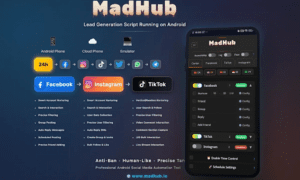In today is fast-paced digital environment, enterprises face increasing pressure to innovate, respond to market changes or deliver new digital experiences rapidly. Yet many of the core systems that power large organizations — such as ERP, CRM, and back-office applications — were built in an era that prioritized robustness over agility. These systems, while still reliable and foundational, were not designed for the speed, flexibility, or connectivity required by modern business operations.
When teams attempt to add new features, integrate new channels, or meet emerging compliance standards, they often encounter significant barriers. The natural instinct may be to replace these aging systems entirely, but full system overhauls are fraught with complexity. Replacements can take years, come with high costs, face major risks, and frequently fail to deliver promised outcomes. Meanwhile, innovation stalls, competitors push ahead, and customer expectations evolve.
Fortunately, replacement is no longer the only path forward. With the rise of modern development tools and integration technologies, organizations can now extend the capabilities of existing systems rather than rebuild them from scratch. By layering new functionality, workflows, and interfaces on top of existing infrastructure, enterprises can evolve their capabilities without the disruption of a full rip-and-replace initiative.
Add Mobile Interfaces to Back-Office Systems
Legacy systems often lack mobile accessibility, yet mobile usage has become standard for both employees and customers. Rather than rewriting core applications, businesses can build mobile front-ends that interact with existing back-office systems through APIs or middleware layers. These mobile interfaces improve accessibility and user experience without altering the system’s internal logic. Employees gain the flexibility to work on the go, and customers can engage through mobile apps — all without changing the core system.
Layer New Workflows on Legacy ERPs
Traditional ERPs are often rigid, requiring significant effort to customize. However, modern workflow tools allow organizations to create new business processes that integrate with these systems externally. For instance, approvals, notifications, and task management processes can be designed and executed outside the ERP but still interact with it via APIs or integration platforms. This approach brings agility to operations without jeopardizing the stability of the core ERP.
Create Portals without Touching the Core Database
Customer, partner, and employee portals are increasingly critical for self-service and digital engagement. Rather than retrofitting these capabilities into legacy systems, organizations can build standalone portals that communicate with core databases indirectly. Using middleware or data abstraction layers, these portals provide modern interfaces while keeping the original systems untouched. This ensures security, performance, and scalability, while delivering a vastly improved user experience.
Integrate Third-Party Tools Faster
As the technology landscape evolves, businesses often need to connect with third-party platforms — from marketing automation to analytics to AI services. Legacy systems are not inherently designed for these integrations. However, modern integration tools, such as iPaaS (integration platform as a service), allow enterprises to connect disparate systems quickly and efficiently. These platforms offer pre-built connectors, data mapping tools, and orchestration capabilities that drastically reduce integration timelines and complexity.
Leverage Visual Builders and Low-Code Platforms
One of the most transformative trends in enterprise IT is the rise of visual development platforms. Low-code and no-code tools empower non-technical users to build applications, automate processes, and design interfaces with minimal coding. Solutions to extend software capabilities through mobile interfaces, layered workflows, external portals, and low-code tools organizations can respond faster, reduce risk, and stay competitive. These tools can be used to extend legacy systems by creating custom apps, dashboards, or automation workflows that sit on top of existing infrastructure. IT teams can retain governance and control, while business users gain the ability to solve problems and drive innovation locally.
Use Modular Orchestration Engines
Modern orchestration engines allow for modular control over business logic, enabling companies to orchestrate services across different systems. These engines sit on top of legacy environments and coordinate actions between systems, users, and third-party applications. By abstracting logic away from the core systems, organizations gain flexibility to adapt processes quickly without touching underlying codebases.
Conclusion: Modernization Doesn’t Always Mean Starting Over
The need for speed in innovation doesn’t require a full system reboot. In fact, the smartest path for many enterprises lies in building around what already exists, not tearing it down. Modern tools empower businesses to evolve without disrupting operations, enabling a hybrid approach that balances stability with agility. Evolution, not revolution, is the sustainable route to digital transformation.































